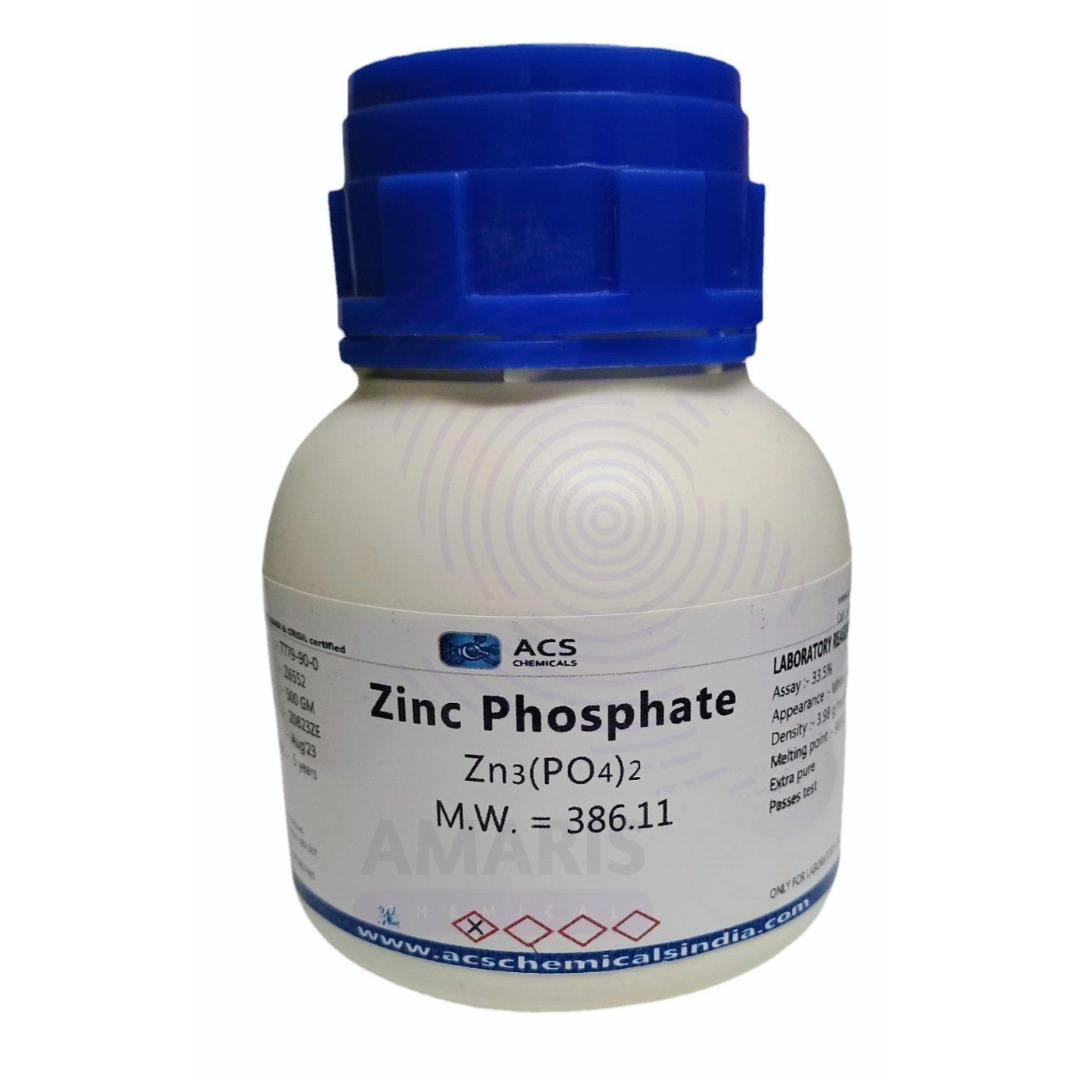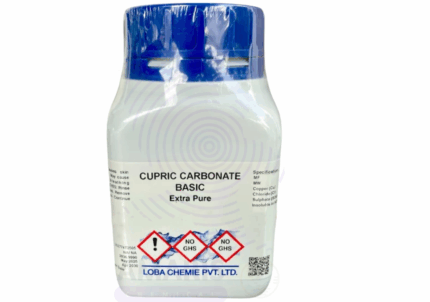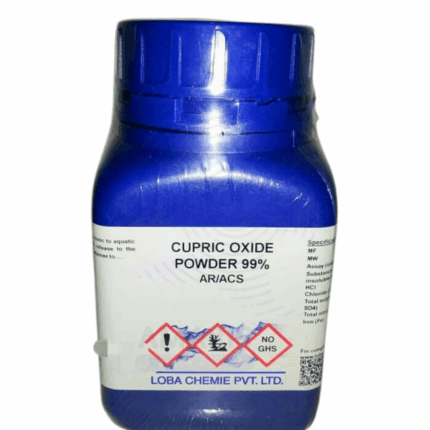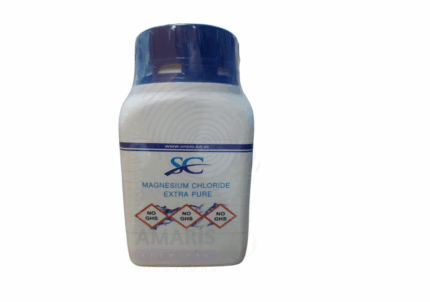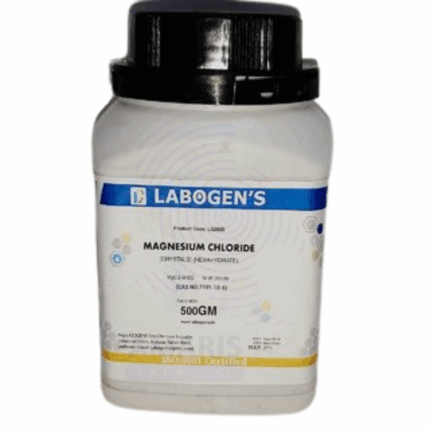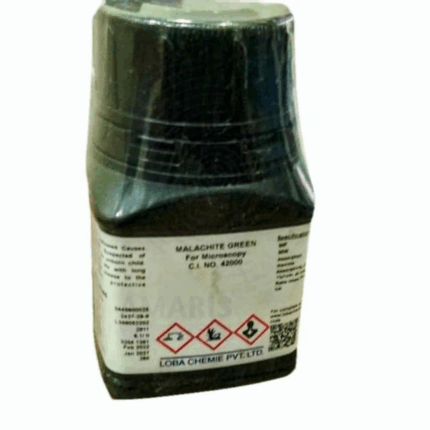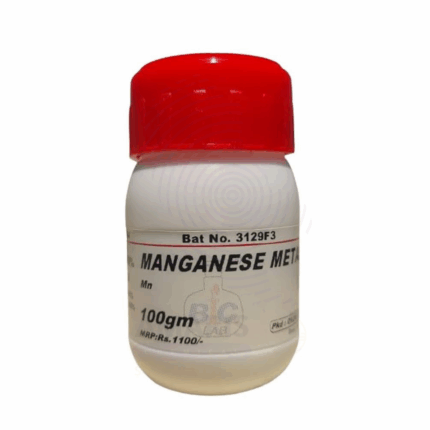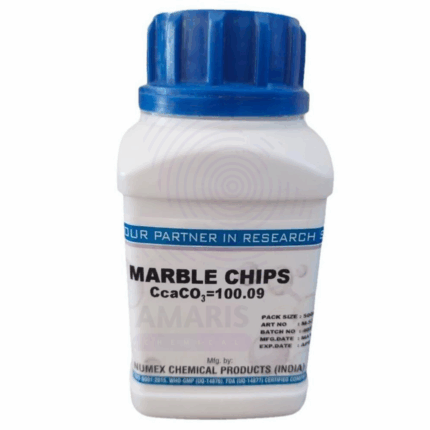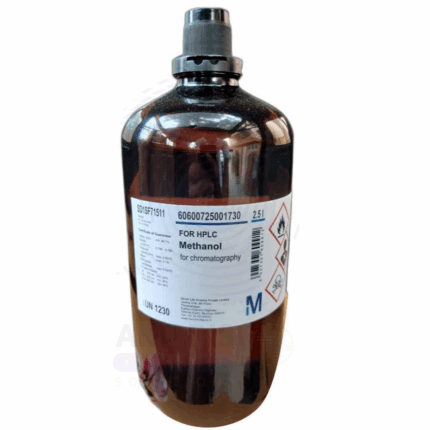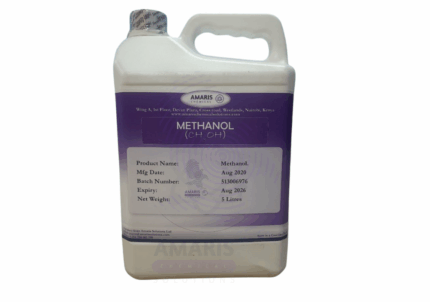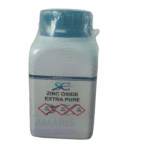
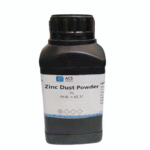
Zinc Phosphate Extra Pure
$ 19.11 Original price was: $ 19.11.$ 18.98Current price is: $ 18.98.
Zinc Phosphate Extra Pure is a white, fine, odorless powder composed of trizinc diphosphate with high chemical stability and purity suitable for analytical and material science applications. It is widely used in laboratories for phosphate-based reactions, corrosion inhibition research, and dental material development. Known for its minimal solubility in water and compatibility with dilute acids, it serves as a stable phosphate source in various experiments. It is especially valued in lab-scale surface treatment simulations, pigment formulation testing, and environmental remediation trials. Zinc Phosphate’s inertness under standard conditions and non-toxic classification make it a preferred choice for controlled reactivity studies, inorganic synthesis, and coatings R&D. Proper handling is required due to its dusty nature, although it is considered non-hazardous under most regulatory frameworks.
Zinc Phosphate Extra Pure
PRIMARY USES
- Analytical Reagent & Laboratory Applications:
- Used in analytical chemistry as a reagent for phosphate and zinc ion detection
- Employed in precipitation reactions, solubility studies, and inorganic synthesis experiments
- Acts as a model compound for coordination chemistry and phosphate interaction studies
- Dental & Biomedical Research:
- Studied for its role in dental cement formulations due to biocompatibility and adhesion properties
- Used in biomedical materials research involving prosthetics and implant coatings
- Evaluated in lab simulations for controlled ion release and pH-buffering behavior in medical applications
- Corrosion Inhibition & Surface Treatment Studies:
- Commonly used in academic and industrial research on phosphate conversion coatings for metals
- Serves as a protective pigment in lab-based corrosion resistance testing
- Investigated for passive coating development and anti-rust formulations in material science labs
SECONDARY USES
- Pigment and Coating Research:
- Studied as a corrosion-inhibiting pigment in primer and paint systems
- Used in research into pigment dispersion, surface bonding, and white pigment formulation
- Environmental and Soil Chemistry:
- Applied in lab-scale phosphate immobilization studies for environmental remediation
- Used in evaluating phosphate buffering effects in soil and water treatment systems
1. Basic Identification Attributes
Chemical Name: Zinc Phosphate
CAS Number: 7779-90-0
HS Code: 2835.39.00
Molecular Formula: Zn₃(PO₄)₂
Synonyms:
- Trizinc diphosphate
- Zinc orthophosphate
- Zinc phosphate tribasic
2. Physical & Chemical Properties
Physical State: Solid (fine powder)
Color & Odor: White to off-white, odorless
Melting Point: Decomposes before melting
Boiling Point: Not applicable
Density/Specific Gravity: ~3.9 g/cm³
Solubility:
- Insoluble in water
- Soluble in dilute mineral acids
pH Level: Slightly basic to neutral in aqueous suspension
Vapor Pressure & Volatility: Non-volatile
Flash Point: Not applicable
Autoignition Temperature: Not applicable
Viscosity: Not applicable
3. Safety & Hazard Attributes
Hazard Class (GHS Classification):
- Not classified as hazardous under most regulatory systems
- May cause mild irritation to skin, eyes, or respiratory tract in powder form
NFPA Ratings: - Health: 1
- Flammability: 0
- Reactivity: 0
Exposure Limits: - No specific OSHA PEL or ACGIH TLV for zinc phosphate
Reactivity: - Stable under normal storage and handling conditions
- Reacts with strong acids to release phosphoric acid and zinc ions
4. Storage & Handling Attributes
Storage Conditions:
- Store in a dry, cool, well-ventilated area
- Keep container tightly sealed to prevent moisture absorption and contamination
Incompatible Materials: - Strong acids
- Strong oxidizing agents
Container Type: - Polyethylene containers or sealed glass/plastic jars
Shelf Life & Expiration Date: - Stable for several years when stored dry and sealed
Special Handling Requirements: - Avoid inhalation of dust
- Use proper personal protective equipment during handling
5. Regulatory & Compliance Attributes
Regulatory Status:
- Listed in TSCA, REACH, and other major chemical inventories
- Approved for use as a laboratory reagent
Transportation Restrictions: - Not classified as hazardous for transportation
Waste Disposal Method: - Dispose in accordance with local environmental regulations
- Can be treated as non-hazardous waste if uncontaminated
6. Environmental & Health Impact
Ecotoxicity:
- Low toxicity in environmental systems
- Overuse may contribute to phosphate runoff concerns in aquatic systems
Persistence in Environment: - Insoluble and stable; may persist in soils and sediments
Carcinogenicity/Mutagenicity: - Not classified as carcinogenic or mutagenic
Biodegradability: - Inorganic and non-biodegradable, but environmentally stable in solid form
SAFETY PRECAUTIONS
Personal Protective Equipment (PPE):
- Wear chemical-resistant gloves
- Use safety goggles or face shield
- Wear lab coat or appropriate protective clothing
- If dust is present, use a dust mask or respirator
Handling:
- Handle in a well-ventilated area
- Avoid generating or inhaling dust
- Avoid contact with skin and eyes
- Wash hands thoroughly after use
Storage:
- Keep in a tightly sealed container
- Store in a dry, cool, and stable environment
- Protect from acids and oxidizers
FIRST AID MEASURES
Inhalation:
- Move to fresh air
- Seek medical attention if symptoms persist
Skin Contact:
- Wash with soap and water
- Remove contaminated clothing
- Seek medical attention if irritation occurs
Eye Contact:
- Rinse cautiously with water for several minutes
- Remove contact lenses if present
- Seek medical advice if irritation continues
Ingestion:
- Rinse mouth with water
- Do not induce vomiting
- Seek medical attention
FIRE FIGHTING MEASURES
Flammability:
- Non-flammable solid
Extinguishing Media: - Use water spray, dry chemical, or foam
Hazardous Combustion Products: - May release zinc oxide and phosphorus oxides if strongly heated
Firefighter Protection: - Use self-contained breathing apparatus
- Wear full protective gear in case of fire involving chemicals


 Preservatives(food)
Preservatives(food) Flavor Enhancers
Flavor Enhancers Acidulants
Acidulants Sweeteners
Sweeteners Antioxidants
Antioxidants Colorants(food)
Colorants(food) Nutraceutical Ingredients (food)
Nutraceutical Ingredients (food) Nutrient Supplements
Nutrient Supplements Emulsifiers
Emulsifiers
 Collectors
Collectors Dust Suppressants
Dust Suppressants Explosives and Blasting Agents
Explosives and Blasting Agents Flocculants and Coagulants
Flocculants and Coagulants Frothers
Frothers Leaching Agents
Leaching Agents pH Modifiers
pH Modifiers Precious Metal Extraction Agents
Precious Metal Extraction Agents
 Antioxidants(plastic)
Antioxidants(plastic) Colorants (Pigments, Dyes)
Colorants (Pigments, Dyes) Fillers and Reinforcements
Fillers and Reinforcements Flame Retardants
Flame Retardants Monomers
Monomers Plasticizers
Plasticizers Polymerization Initiators
Polymerization Initiators Stabilizers (UV, Heat)
Stabilizers (UV, Heat)
 Antifoaming Agents
Antifoaming Agents Chelating Agents
Chelating Agents Coagulants and Flocculants
Coagulants and Flocculants Corrosion Inhibitors
Corrosion Inhibitors Disinfectants and Biocides
Disinfectants and Biocides Oxidizing Agents
Oxidizing Agents pH Adjusters
pH Adjusters Scale Inhibitors( water)
Scale Inhibitors( water)
 Antioxidants(cosmetic)
Antioxidants(cosmetic) Emollients
Emollients Fragrances and Essential Oils
Fragrances and Essential Oils Humectants
Humectants Preservatives
Preservatives Surfactants(cosmetic)
Surfactants(cosmetic) Thickeners
Thickeners UV Filters
UV Filters
 Fertilizers
Fertilizers Soil Conditioners
Soil Conditioners Plant Growth Regulators
Plant Growth Regulators Animal Feed Additives
Animal Feed Additives Biostimulants
Biostimulants Pesticides (Herbicides, Insecticides, Fungicides)
Pesticides (Herbicides, Insecticides, Fungicides)
 Active Pharmaceutical Ingredients (APIs)
Active Pharmaceutical Ingredients (APIs) Excipients
Excipients Solvents(pharmaceutical)
Solvents(pharmaceutical) Antibiotics
Antibiotics Antiseptics and Disinfectants
Antiseptics and Disinfectants Vaccine Adjuvants
Vaccine Adjuvants Nutraceutical Ingredients (pharmaceutical)
Nutraceutical Ingredients (pharmaceutical) Analgesics & Antipyretics
Analgesics & Antipyretics
 Analytical Reagents
Analytical Reagents Solvents(lab)
Solvents(lab) Chromatography Chemicals
Chromatography Chemicals Spectroscopy Reagents
Spectroscopy Reagents microbiology-and-cell-culture-reagents
microbiology-and-cell-culture-reagents Molecular Biology Reagents
Molecular Biology Reagents Biochemical Reagents
Biochemical Reagents Inorganic and Organic Standards
Inorganic and Organic Standards Laboratory Safety Chemicals
Laboratory Safety Chemicals Specialty Laboratory Chemicals(Special Laboratory Equipment)
Specialty Laboratory Chemicals(Special Laboratory Equipment)
 Demulsifiers
Demulsifiers Hydraulic Fracturing Fluids
Hydraulic Fracturing Fluids Scale Inhibitors(oil)
Scale Inhibitors(oil) Surfactants(oil)
Surfactants(oil) Drilling Fluids
Drilling Fluids
 Dyes and Pigments
Dyes and Pigments Bleaching Agents
Bleaching Agents Softening Agents
Softening Agents Finishing Agents
Finishing Agents Antistatic Agents
Antistatic Agents
 Admixtures
Admixtures Waterproofing Agents
Waterproofing Agents Sealants and Adhesives
Sealants and Adhesives Curing Compounds
Curing Compounds Concrete Repair Chemicals
Concrete Repair Chemicals Anti-Corrosion Coatings
Anti-Corrosion Coatings
 Surfactants(cleaning)
Surfactants(cleaning) Builders
Builders Enzymes
Enzymes Solvents (Cleaning)
Solvents (Cleaning) Fragrances
Fragrances
 Electronic Chemicals
Electronic Chemicals Catalysts
Catalysts Lubricants
Lubricants Photographic Chemicals
Photographic Chemicals Refrigerants
Refrigerants Automotive chemicals
Automotive chemicals Pyrotechnic Chemicals
Pyrotechnic Chemicals
 Biodegradable Surfactants
Biodegradable Surfactants Bio-based Solvents
Bio-based Solvents Renewable Polymers
Renewable Polymers Carbon Capture Chemicals
Carbon Capture Chemicals Wastewater Treatment Chemicals
Wastewater Treatment Chemicals
 Pigments
Pigments Solvents(paint)
Solvents(paint) Specialty Coatings
Specialty Coatings Binders/Resins
Binders/Resins Additives
Additives Driers
Driers Anti-Corrosion Agents
Anti-Corrosion Agents Functional Coatings
Functional Coatings Application-Specific Coatings
Application-Specific Coatings
 Fresh Herbs
Fresh Herbs Ground Spices
Ground Spices Whole Spices
Whole Spices Spice Blends
Spice Blends Dried Herbs
Dried Herbs
 Leavening Agents
Leavening Agents Dough Conditioners
Dough Conditioners Flour Treatments
Flour Treatments Fat Replacers
Fat Replacers Decoratives
Decoratives Preservatives(baking)
Preservatives(baking)
 Plasticizers & Softeners
Plasticizers & Softeners Reinforcing Agents
Reinforcing Agents Adhesion Promoters
Adhesion Promoters Vulcanizing Agents
Vulcanizing Agents Antidegradants
Antidegradants Blowing Agents
Blowing Agents Fillers & Extenders
Fillers & Extenders Accelerators & Retarders
Accelerators & Retarders